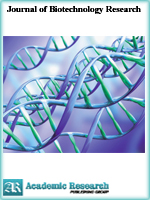Journal of Biotechnology Research
Online ISSN: 2413-3256
Print ISSN: 2413-8878
Print ISSN: 2413-8878
Quarterly Published (4 Issues Per Year)

Archives
Volume 5 Number 1 January 2019
Comparison Between Feature-Based and Convolutional Neural Network–Based Computer-Aided Diagnosis for Breast Cancer Classification in Digital Breast Tomosynthesis
Authors: Siwa Chan ; Jinn-Yi Yeh
Pages: 1-18
DOI: doi.org/10.32861/jbr.51.1.18
Abstract
Digital breast tomosynthesis (DBT) is a promising new technique for breast cancer diagnosis. DBT has the potential to overcome the tissue superimposition problems that occur on traditional mammograms for tumor detection. However, DBT generates numerous images, thereby creating a heavy workload for radiologists. Therefore, constructing an automatic computer-aided diagnosis (CAD) system for DBT image analysis is necessary. This study compared feature-based CAD and convolutional neural network (CNN)-based CAD for breast cancer classification from DBT images. The research methods included image preprocessing, candidate tumor identification, three-dimensional feature generation, classification, image cropping, augmentation, CNN model design, and deep learning. The precision rates (standard deviation) of the LeNet-based CNN CAD and the feature-based CAD for breast cancer classification were 89.84 (0.013) and 84.46 (0.082), respectively. The T value was -4.091 and the P value was 0.00 < 0.05, which indicate that the LeNet-based CNN CAD significantly outperform the feature-based CAD. However, there is no significantly differences between the LeNet-based CNN CAD and the feature-based CAD on other criteria. The results can be applied to clinical medicine and assist radiologists in breast cancer identification.



